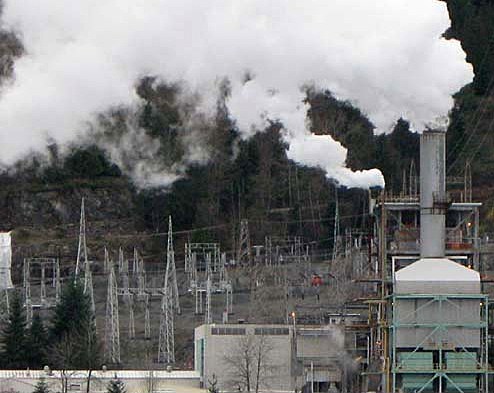This week, with essentially no fanfare, BC Hydro’s Burrard Thermal generating plant on Port Moody’s north shore is quietly shutting its doors.
Now a victim of misguided public policy, this plant opened in the 1960s and has played an essential role in providing electricity through the combustion of natural gas. With a capacity of 900 MW and the ability to produce up to 7,000 GWh per year, it has the potential to provide almost 10% of the province’s electricity.
In recent years, it has been a valuable standby plant to provide emergency power or peaking power in the winter, when cold weather and short daylight hours result in the highest daily consumption of electricity. It’s important to note Burrard is not closing entirely; its function to maintain voltage will be kept and so will a few jobs.
A fatal blow was struck to BC Hydro with the announcement of the Gordon Campbell government’s Energy Plan in 2002. BC Hydro was prohibited from developing any new sources of electricity (with the exception of Site C) and Burrard Thermal was scheduled to be shut down after the completion of the lengthy Interior-to-Lower Mainland transmission line.
Although Hydro was required to generate 93% of its electricity from renewable resources such as dams, this still provided ample room for the operation of Burrard. As the major electricity provider to much of B.C., BC Hydro also has a responsibility to maintain the ability to provide electricity during emergency conditions such as forest fires, earthquakes or ice storms.
In the 1990s, during the California electricity crisis (which later turned out to have been purposely created to generate high profits for Enron), BC Hydro was running Burrard Thermal during the summer months to export electricity to California. Because this created local air quality concerns with regard to smog generation, BC Hydro installed selective catalytic reduction units to reduce nitrogen oxides production by more than 90%. As a result, Burrard Thermal became the cleanest operating standby natural gas fired plant in North America.
With these improvements plus its strategic location in the Lower Mainland, it is an ideal plant for use as a vitally important backup to provide electricity during emergencies and peak demand periods. Unfortunately, the lingering misimpression remained that it was a “dirty” power plant, a falsehood frequently bolstered by misleading statements from government officials.
Throughout its lifetime, Burrard Thermal was used very little because large hydro reservoirs in the Interior came on stream and were able to provide much of the electricity needed. As a result, Burrard remained in good working order and has been well maintained.
Nonetheless, government policies that favour private power producers over in-house electricity generation have led to the demise of Burrard Thermal. It costs BC Hydro only $20 million a year to keep Burrard in operation.
Despite this, BC Hydro is now paying a private operator in Campbell River $55 million a year to maintain another natural gas-fired plant on standby. This plant’s maximum output is only 275 MW and it does not have the selective catalytic reduction units to prevent the generation of nitrogen oxides. As well, Campbell River isn’t especially close to the Lower Mainland; for example, transmission of electricity from this plant to Metro Vancouver could be interrupted by a major earthquake.
In Ontario, Ontario Power pays $85 million to a gas-fired plant near Kingston to remain on standby. At only $20 million, Burrard is a truly a bargain. To my mind, its location next to most of B.C.’s population makes it a priceless asset.
And how often do emergencies arise when we need such emergency power?
In 2008, during the winter months of peak demand, there were ice jams on the Peace River that curtailed electricity operations there. At that time, Burrard was fired up on five of six units (83% capacity) and it ran for several weeks.
In 2009, extensive forest fires threatened the Kelly Lake transmission substation and Burrard was put on alert again. Fortunately, these forest fires were brought under control and Burrard was not needed — but it was ready.
In 1999, heavy snow storms on Vancouver Island toppled several 500 kV transmission towers and damaged 30 others. Such emergencies seem to happen on a regular basis.
It’s quite bizarre that Premier Christy Clark, first elected as a Port Moody MLA on a promise to close Burrard Thermal, considers the LNG industry to be clean and green but calls Burrard a “major polluter,” which it is not. It’s a big mistake to be mothballing Burrard.
Now, the recently approved Woodfibre LNG Plant in Howe Sound will be exporting the supply of natural gas that once helped to keep our lights on in the winter. As that old folk song goes, when will we ever learn?
--Elaine Golds is a Port Moody environmentalist who is conservation/education chair of the Burke Mountain Naturalists and member of the boards of the Colony Farm Park Association and the Port Moody Ecological Society.



